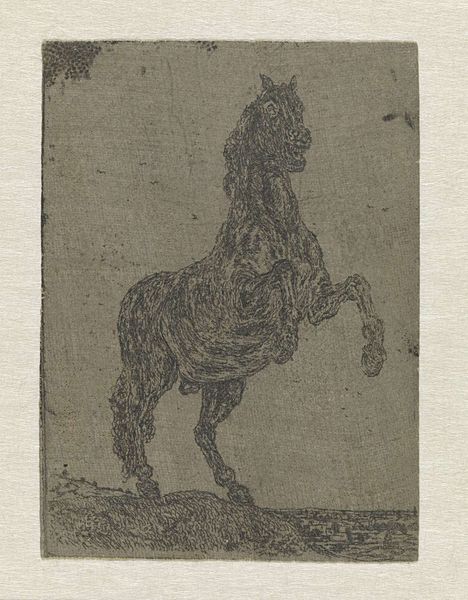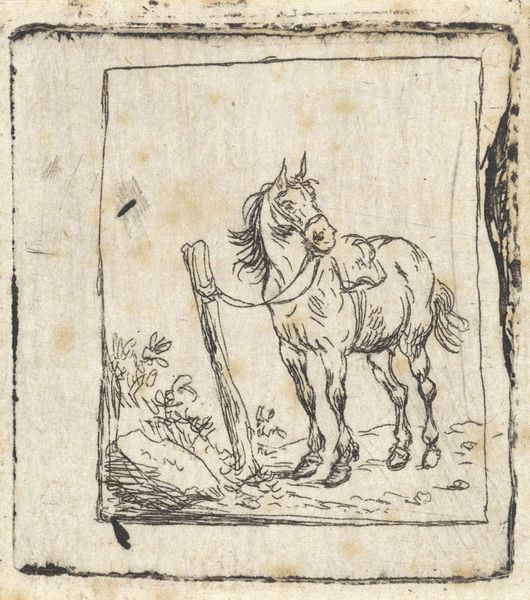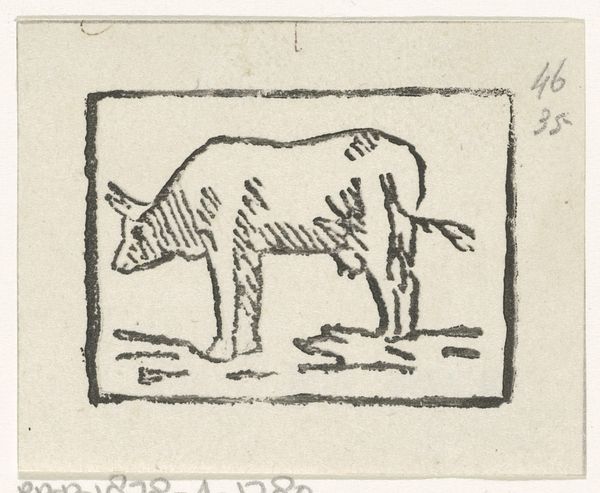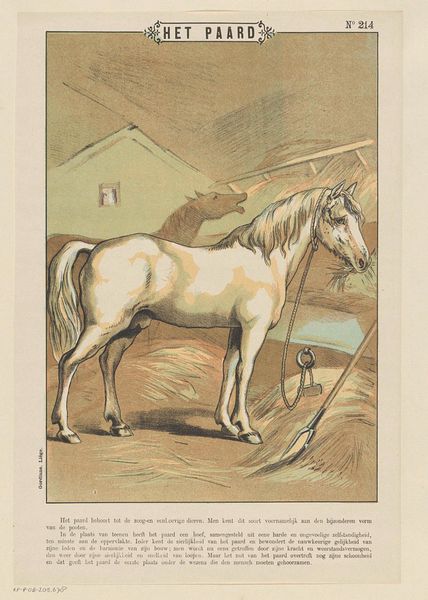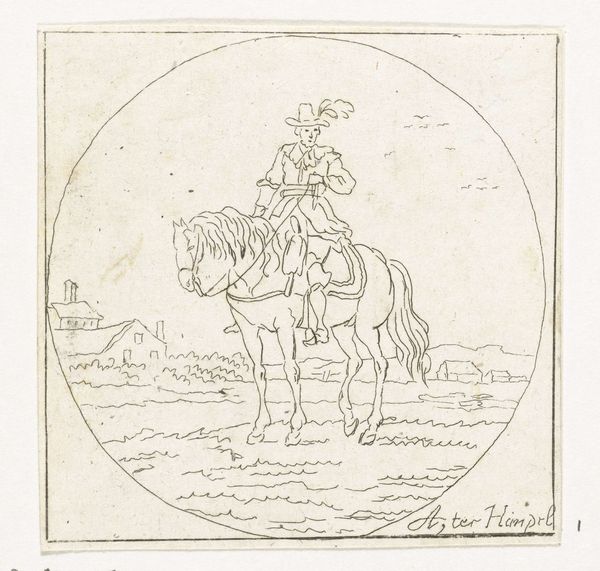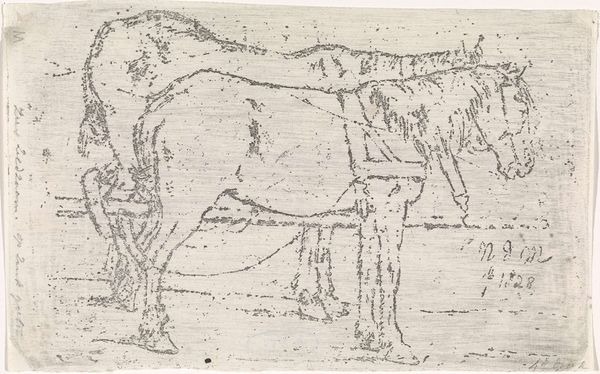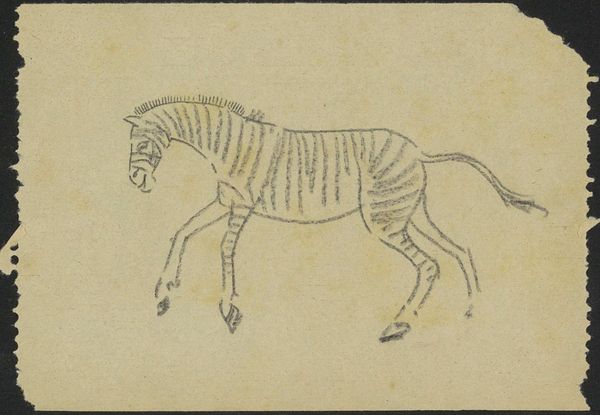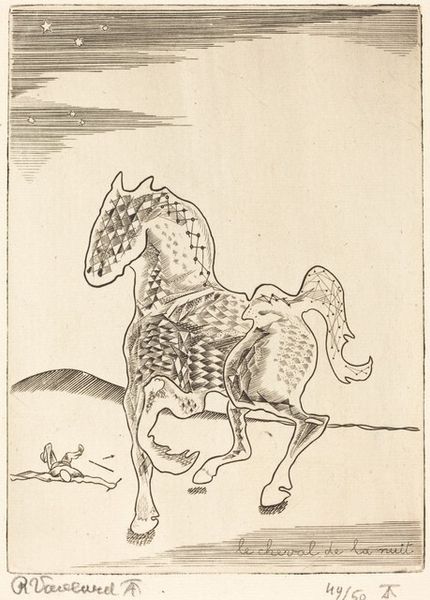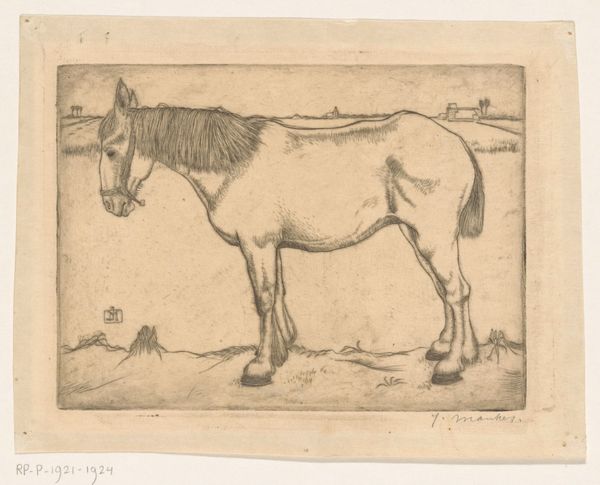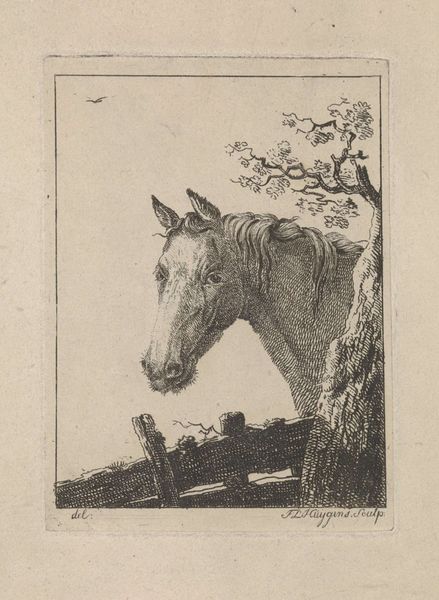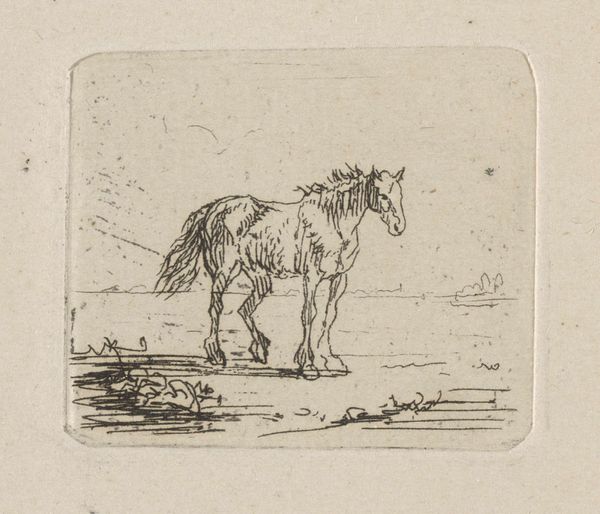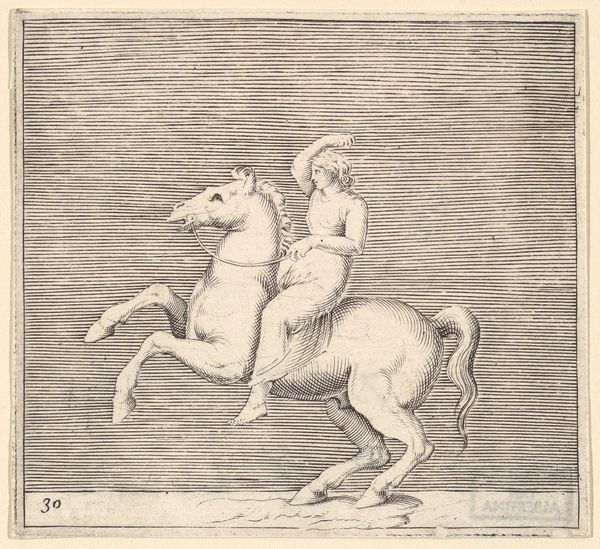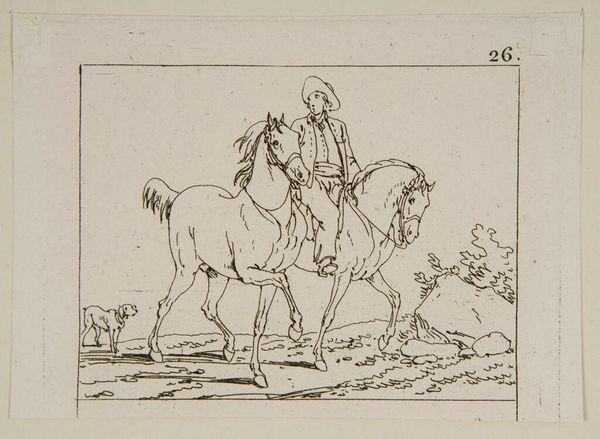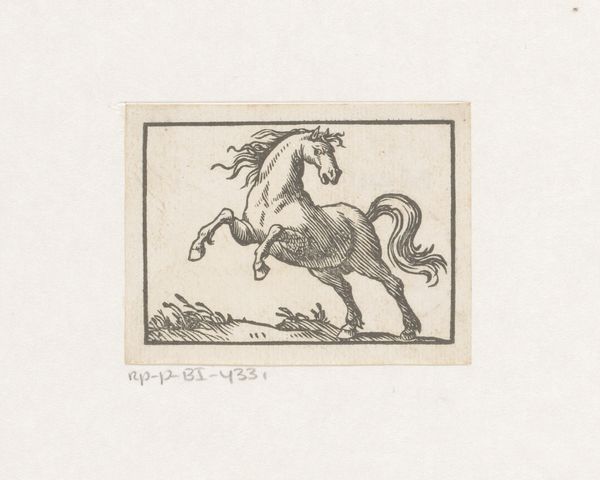
drawing, paper, ink, pen
#
portrait
#
drawing
#
comic strip sketch
#
paper
#
personal sketchbook
#
ink
#
idea generation sketch
#
sketchwork
#
pen-ink sketch
#
horse
#
line
#
pen work
#
sketchbook drawing
#
pen
#
history-painting
#
storyboard and sketchbook work
#
sketchbook art
#
realism
#
initial sketch
Dimensions: height 29 mm, width 26 mm
Copyright: Rijks Museum: Open Domain
This tiny print of a horse was made by Jacob Hoolaart sometime in the 1700s using the intaglio technique. In this process, a metal plate, most likely copper, would have been covered with a waxy, acid-resistant ground. Hoolaart would then have scratched his design through this ground, exposing the metal beneath. The plate was then immersed in acid, which bit into the exposed lines, creating grooves. Ink would then have been forced into these grooves, the surface wiped clean, and the image transferred to paper under high pressure. Intaglio is a precise method, capable of capturing fine detail, but it is also labor intensive. Its rise was directly connected to the development of capitalism, and the rise of the merchant class. Prints such as this could be produced in multiples and circulated widely. Ultimately, considering the material and the making helps us understand the role of such images in society, and the interplay of labor, commerce, and art.
Comments
No comments
Be the first to comment and join the conversation on the ultimate creative platform.
